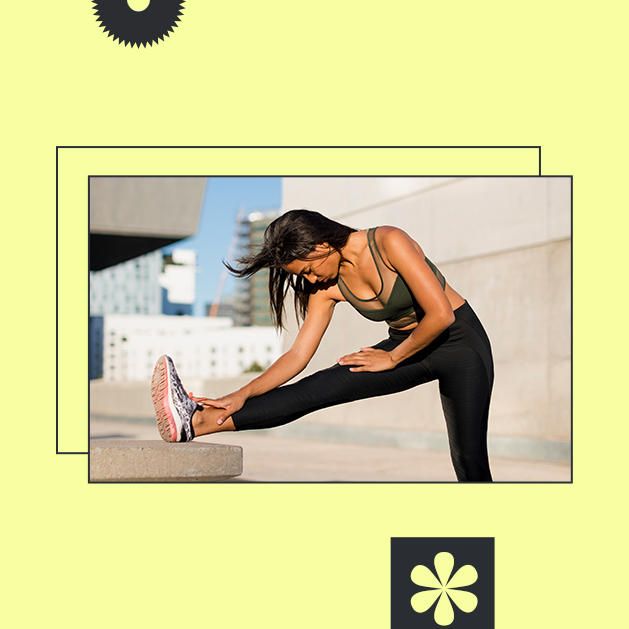I‘m the type of exerciser that plans my workouts around my schedule or when my favorite trainer is teaching class that week. But new research suggests that planning your workouts around your recovery status may be a smarter move. So what does that mean?
According to one of the study authors, Olli-Pekka Nuuttila, the findings point to the fact that there is no universal standard when it comes to endurance training and recovery. “We wanted to use multiple variables in the recovery monitoring, to have a holistic view of the current state of recovery,” he says. The study, which was funded by fitness wearable brand Polar, shows that recovery is not black and white: You need to consider multiple factors (data and otherwise) to truly gauge how well your body’s bounced back after exercise.
The study used several markers to measure recovery, including perceived fatigue and muscle soreness, as well as heart rate variability (HRV) since, “there is quite good evidence supporting the use of HRV in the monitoring of stress (physical and mental),” notes Nuuttila.
“The third factor that we used was the HR-RS index, which basically measures the difference between the actual and hypothetical speed at a certain heart rate (HR),” he says. “So, if you can run faster at a certain HR, HR-RS increases and vice versa. This marker was used since we wanted to also have some indicator to monitor changes in the actual (running) performance.”
Related Stories
Participants with the individualized training plan were checked twice a week on their recovery status. Based on that, their training was adjusted (either decreased, maintain, or increased load) based on how well they recovered using optimal ranges in the data mentioned above.
The case for individualized recovery plans
The participants in the study (made up of 20 male and 20 female runners with a background in endurance training) who tweaked their training based on recovery status improved their running time twice as much versus the group who trained without adapting their plan to recovery status. “Each subject in the individualized group improved their performance from baseline in the treadmill test, so it seems that the possibilities of ‘going wrong’ with this type of method are quite low,” Nuuttila says, and they support anecdotal evidence trainers like Erika Bloom, pilates expert trainer and founder of Erika Bloom Pilates, observe with their clients.
“The results of this study support what I’ve found in my many decades of working with athletes and runners,” Bloom says. “Allowing recovery time based on each person’s bio-individuality is important. We are each unique and so one training program doesn’t work across the board.”
Of the main takeaways from the study, a significant one is to not be afraid to decrease your training load by, for example running less than your program may call for if you’re not recovered enough to take it on. This can be hard for athletes than increasing their load as most people see progress as linear. “I think many competitive and recreational runners struggle with adapting their training program,” Nuuttila says. “Although it may sometimes be challenging, the whole point of recovery monitoring would be missed if one does not dare to decrease training load when monitoring variables would suggest so,”
How to tell when to push or scale back your training
Use wearables that track recovery
Thankfully, fitness tech has made it way easier to keep track of recovery-related stats like HRV, notably. Whoop and Oura are two popular options that tell you your HRV, and give you other stats that point to recovery status like resting heart rate, your sleep, and more depending on the device. Whoop gives you a recovery percentage and Oura has a “readiness” score, signaling when your body is ready to train again or when you may need to take it easy.
Check in with yourself
As Nuuttila pointed out above, perceived fatigue (aka how tired you feel) and muscle soreness are both indicators of how well you’ve recovered from your training. Take a minute to check in with yourself based on those two factors to see if your body is really ready to train, or if you need a rest day.
Bottom line: Individualized recovery is about training smarter, not harder
Remember, the study found that those who reduced their training load when they weren’t recovered well actually ran faster than those that ignored the body’s recovery status and pushed through. Essentially, they were optimizing their performance rather than operating on autopilot, which may be the key to better outcomes, Bloom believes. “Our body has recruitment patterns that lead to more efficient running,” she says. “Efficiency results in greater speed and endurance. When we run before we recover, we may not be able to fully access those patterns—whether it’s from muscle fatigue or disruptions to our fascial length or fluidity. This leads to slower times or shorter runs.” Neither of which is helpful if you’re in it for the long haul.
Source by www.wellandgood.com










